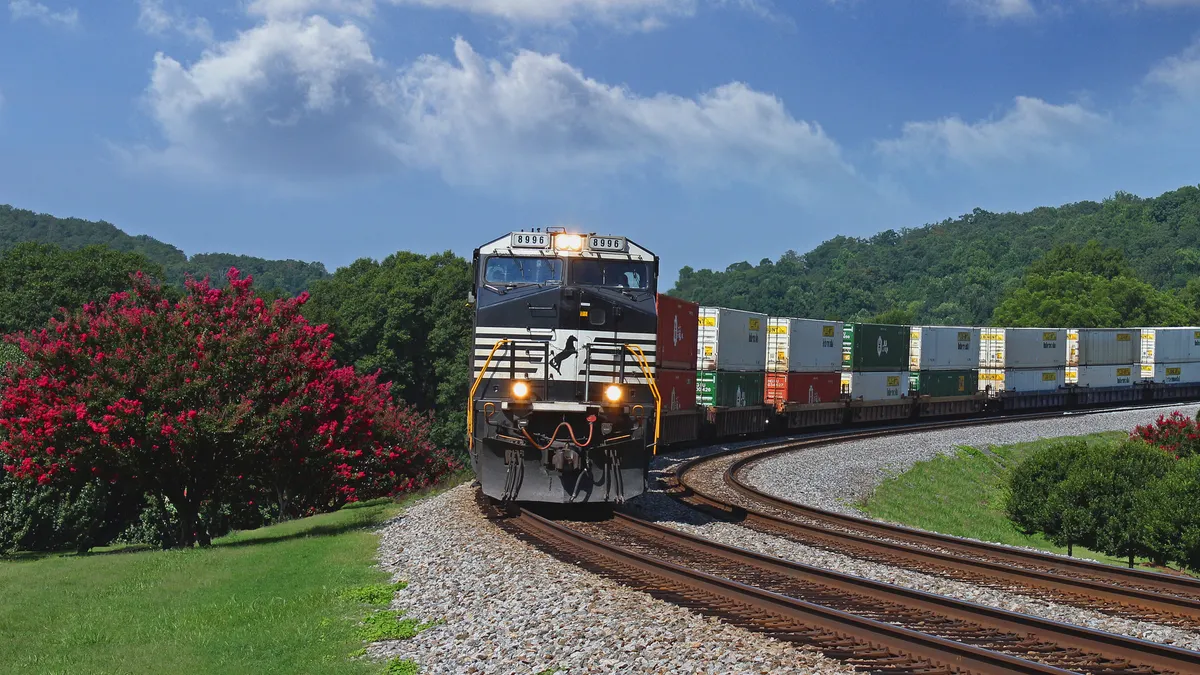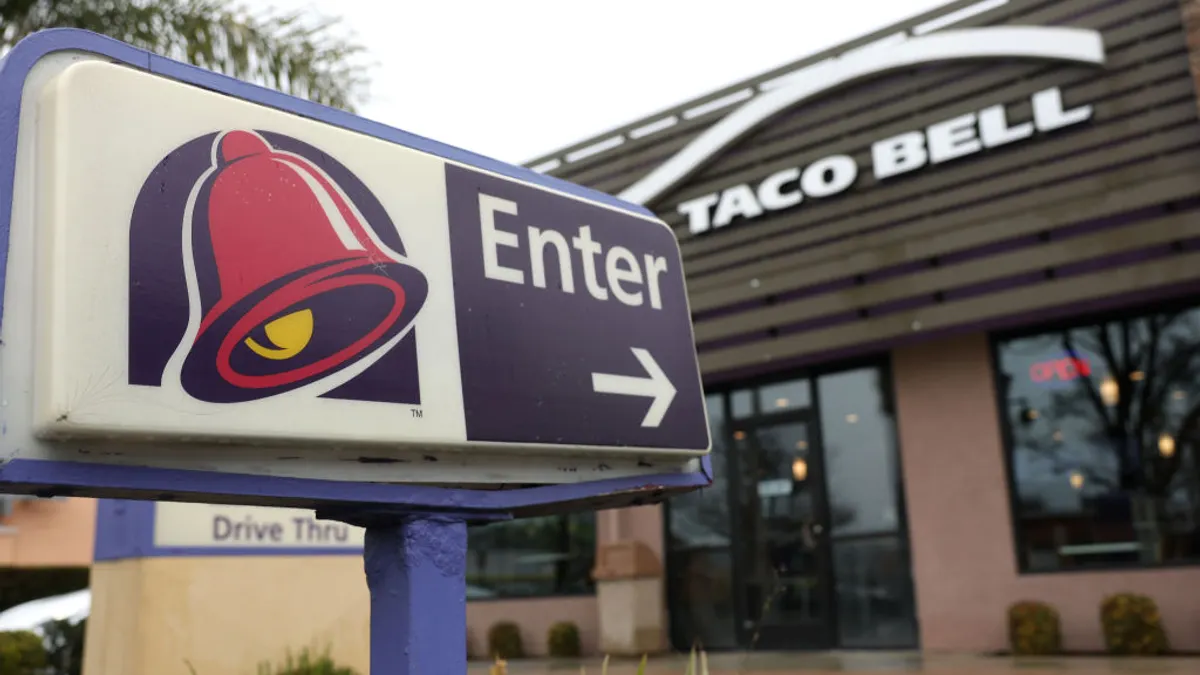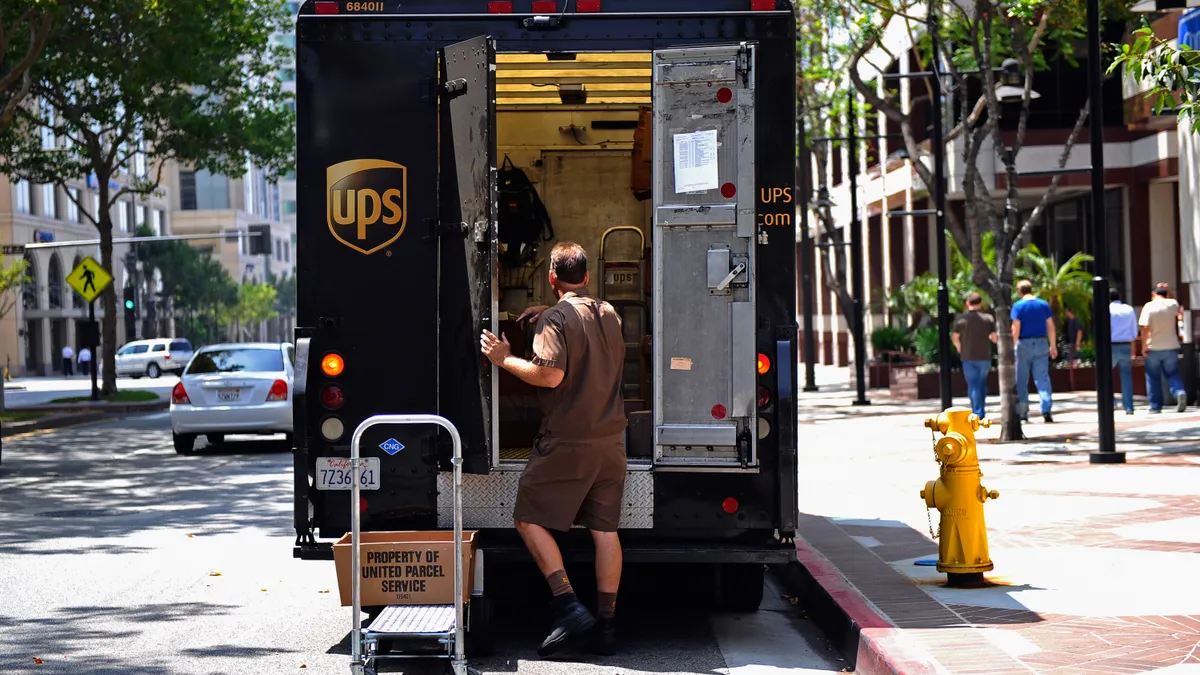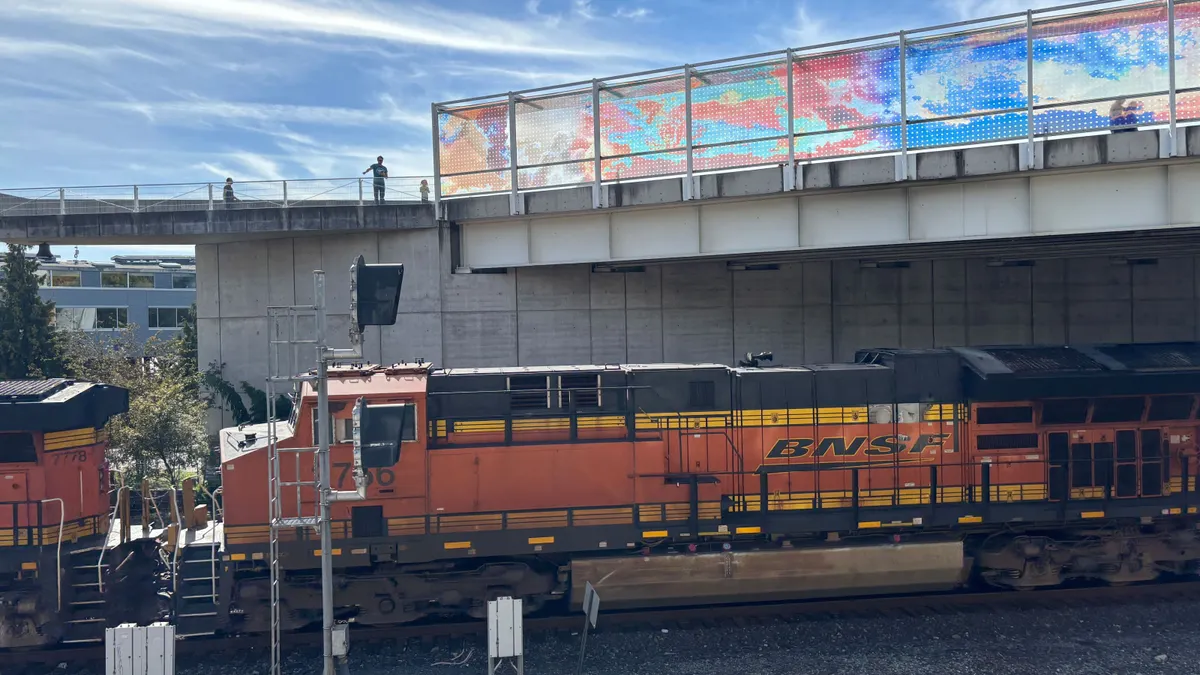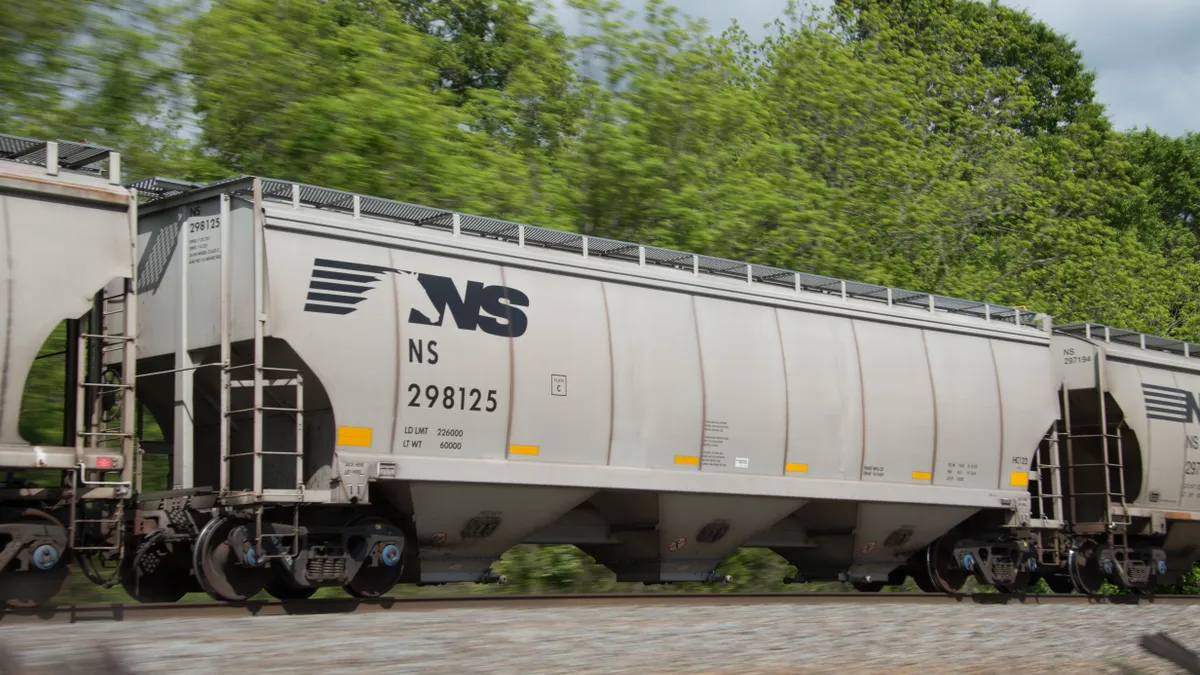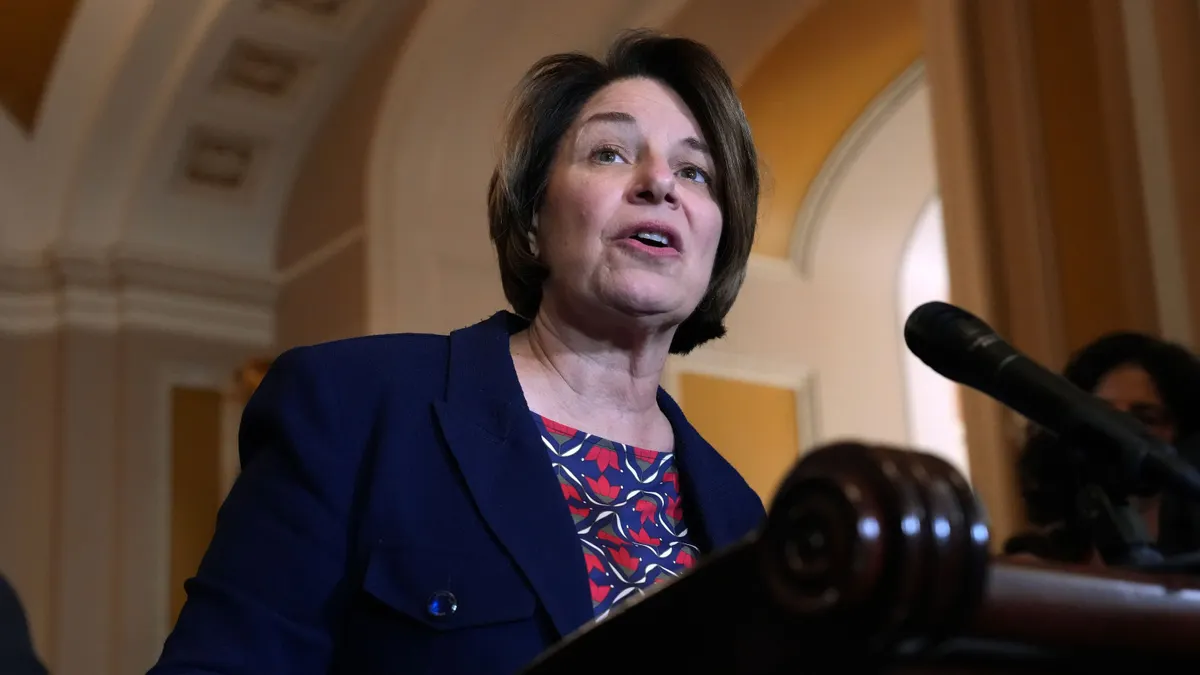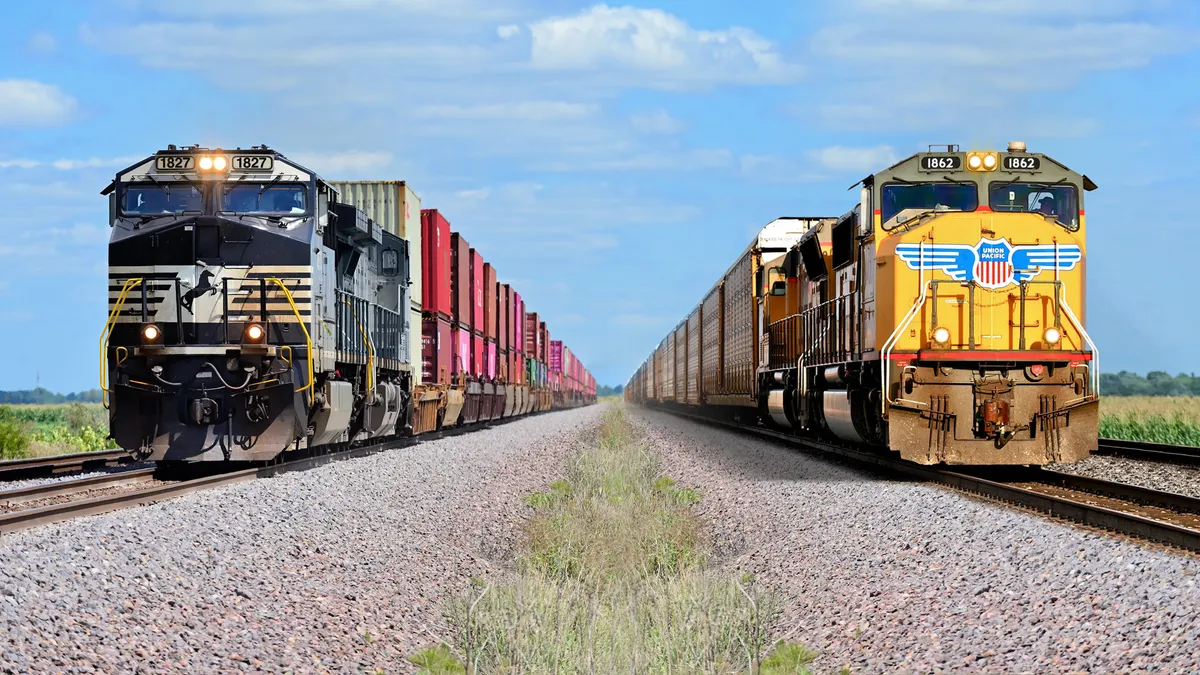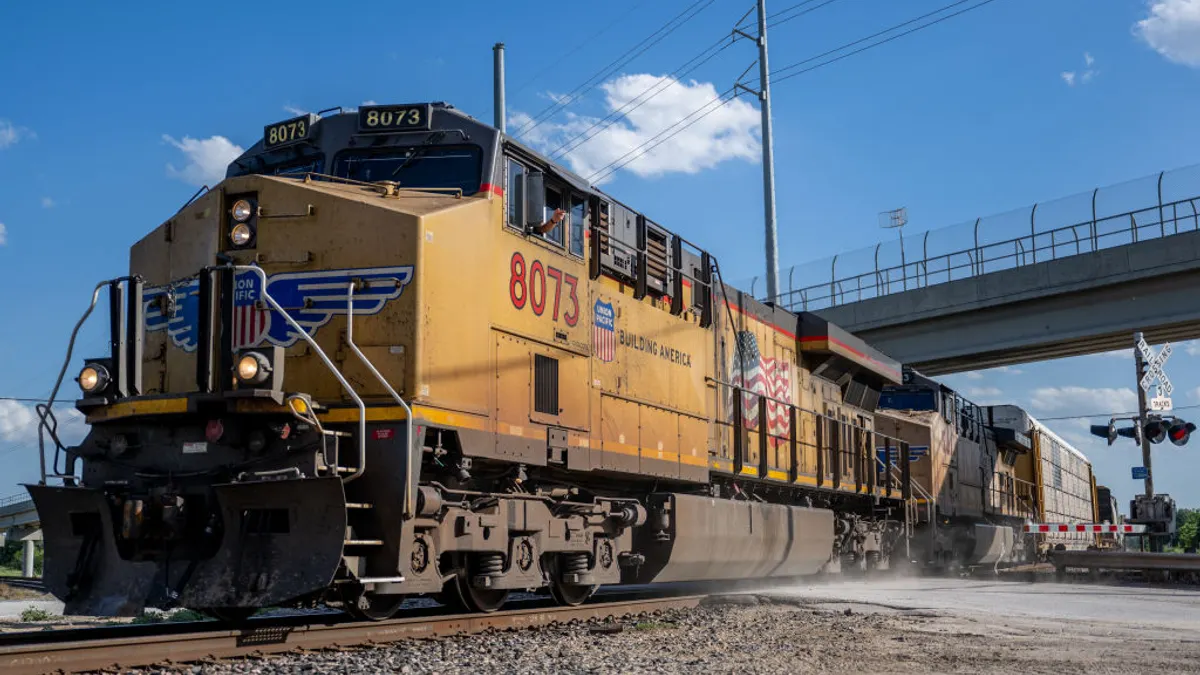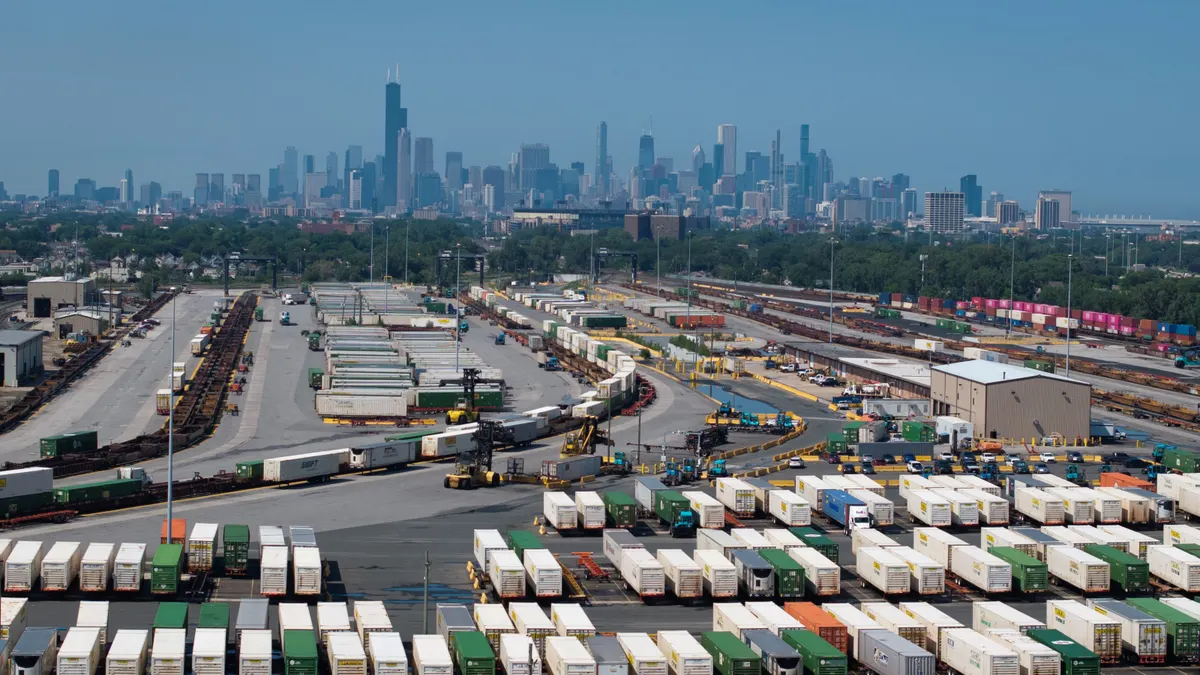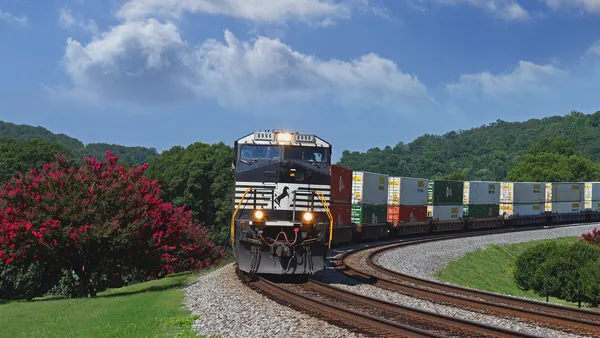Union Pacific and Norfolk Southern’s proposal to merge rail networks could transform supply chains in one key way: by reducing the need for truck transfers in Chicago.
The Windy City is the busiest gateway linking the two West Coast Class I railroads with their two East Coast counterparts. To manage that volume, railroads have for decades exchanged entire intermodal trains using a steel-wheel interchange in Chicago, a process that takes as little as 10 minutes at a crew change point.
But shipments between lower-volume origins and destinations often move more slowly. Railroads typically don’t offer steel-wheel interchange for shipments moving in lower-volume lanes because they can’t consistently fill double-stack well cars that can handle six or 10 containers. As a result, they rely on drayage providers to truck cargo between intermodal terminals.
These days, about a million shipments annually — or 3,000 per day — are drayed between Chicago intermodal terminals, according to estimates from intermodal analyst Larry Gross.
But rail industry leaders say a coast-to-coast single-line service could significantly dent that figure.
How a transcontinental railroad would simplify transfers
When Union Pacific and Norfolk Southern announced their merger deal in late July, they pledged to connect more than 50,000 route miles across 43 states — and to speed supply chains along the way.
The $85 billion deal requires the approval of the U.S. Surface Transportation Board, and many details of the deal are still pending. For example, the merger application that will fully detail their intermodal operating plans is due to be filed with federal regulators between Oct. 29 and Jan. 29. However, railroad executives and analysts alike say they can already predict some of the likely impacts of a transcontinental network.
“A single coast-to-coast network will deliver faster, more competitive service by eliminating car touches and interchange delays, opening new routes, expanding intermodal services, and ensuring faster transit times on key rail corridors,” Union Pacific CEO Jim Vena said in an August letter on the deal. “We will take even more trucks off highways, decreasing congestion, and reducing wear-and-tear on taxpayer-funded roads.”
Specifically, Vena told trade press in July that a combined railroad would be able to bypass Chicago terminal. Instead, trains built in Southern California could deliver shipments to lower-volume East Coast destinations, such as Philadelphia, Baltimore or Springfield, Mass., as well as Ohio Valley destinations, including Columbus.
The single-line service would also eliminate friction from rubber-tire moves, such as scheduling drayage in Chicago and coordinating booking, tracking and invoicing with multiple railroads, Shelli Austin, president of intermodal marketing company Tek Intermodal Logistics, said in an email.
Crosstown moves also add extra steps for intermodal marketing companies, she said.
“It’s a pain. You’ve got to get the crosstown. You’ve got to do the gate reservations,” said Ted Prince, an intermodal veteran and CEO of Tri-Cities Intermodal, in an interview.
Crosstowns can also add up to three days to transit time, Prince says. Costs due to crosstowns can also increase by $300 to $350 per shipment, while contributing to traffic congestion and air pollution in Chicago.
“The physical crosstown itself typically adds about a day, but that’s not the only factor,” Austin said. “You also have to wait until the load notifies and grounds before the crosstown can even take place, which can add another day. So in practice, we generally consider a rubber-tire move to add at least two days.”
Intermodal traffic may grow in other ways
Even if Union Pacific and Norfolk Southern achieve fewer crosstown moves through the network merger, analysts say intermodal traffic may see gains in other ways.
First, the combined railroad would not solve all crosstown problems, with Prince citing physical limitations and time constraints on how many blocks origin terminals can be loaded on each train. “So I don’t understand how, with the current operating model, you eliminate the Chicago shuffle,” he said.
Similarly, although a Union Pacific-Norfolk Southern merger could reduce crosstown moves in some lanes, it may increase them in others, Austin said.
“For instance, there are through-rate solutions today between UP and CSX that may go away if the merger happens,” Austin said, including those involving their joint UMAX container pool. “Depending on what’s decided with the UMAX program, private boxes on UP may still move on CSX, but likely at a higher cost. That dynamic could lead to more crosstown moves.”
Union Pacific and Norfolk Southern also contend that the network merger would improve service, reduce friction and give beneficial cargo owners more options, leading to generalized volume growth.
InTek CEO Rick LaGore agrees. “Streamlining transit and lowering costs would strengthen intermodal’s ability to compete more effectively with trucking,” LaGore said in an email.
Gross estimates the rise of single-line services could lead to domestic intermodal growth of as much as 25%. Gross said this volume growth could come either through transcontinental mergers, or from railroads pursuing truly coordinated interline partnerships, such as BNSF and CSX’s rail solution announced in August.
The reason: Beneficial cargo owners and intermodal providers have shown a strong preference for single-line service, Gross added. Today, only 15% of intermodal shipments move in interline service.


